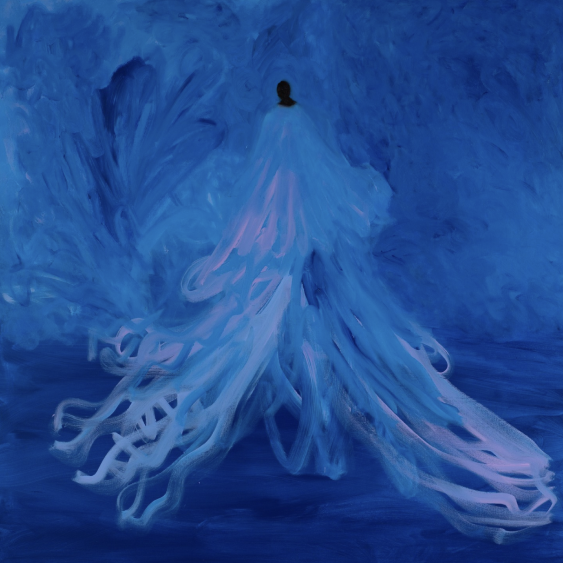Re:View
South African new media takes The Tanks
with Dineo Seshee Bopape, Moshekwa Langa and Buhlebezwe Siwan
Share
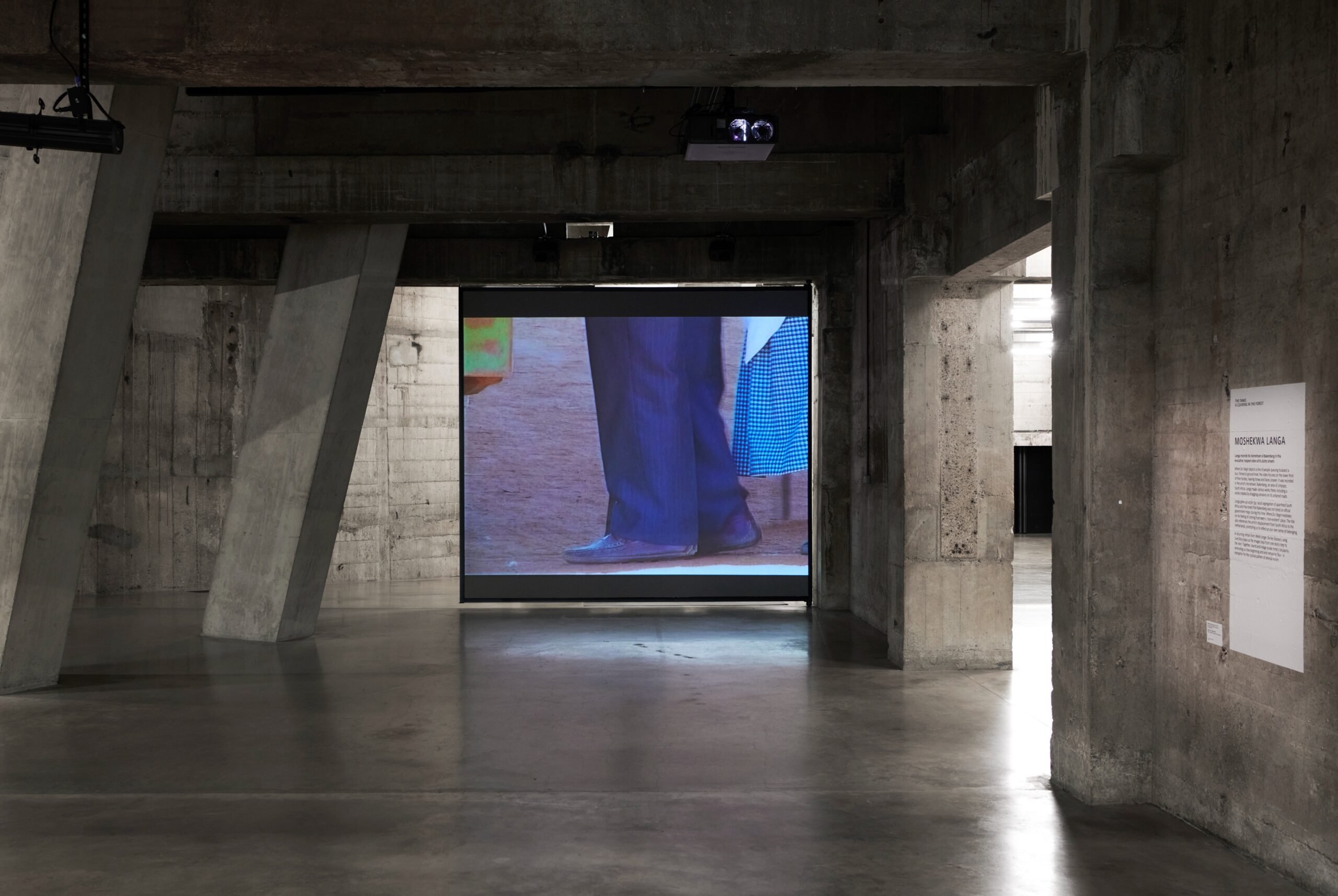
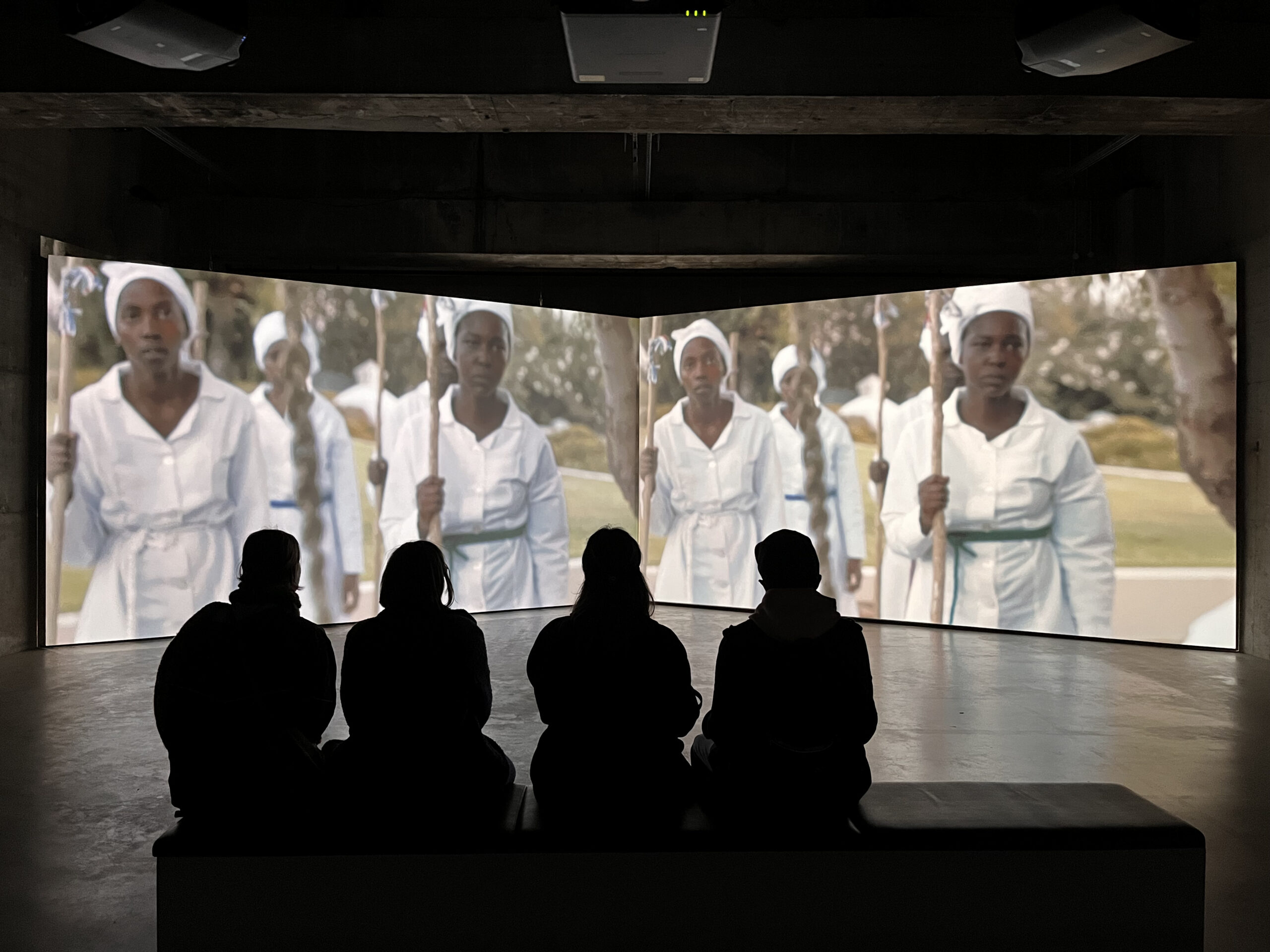
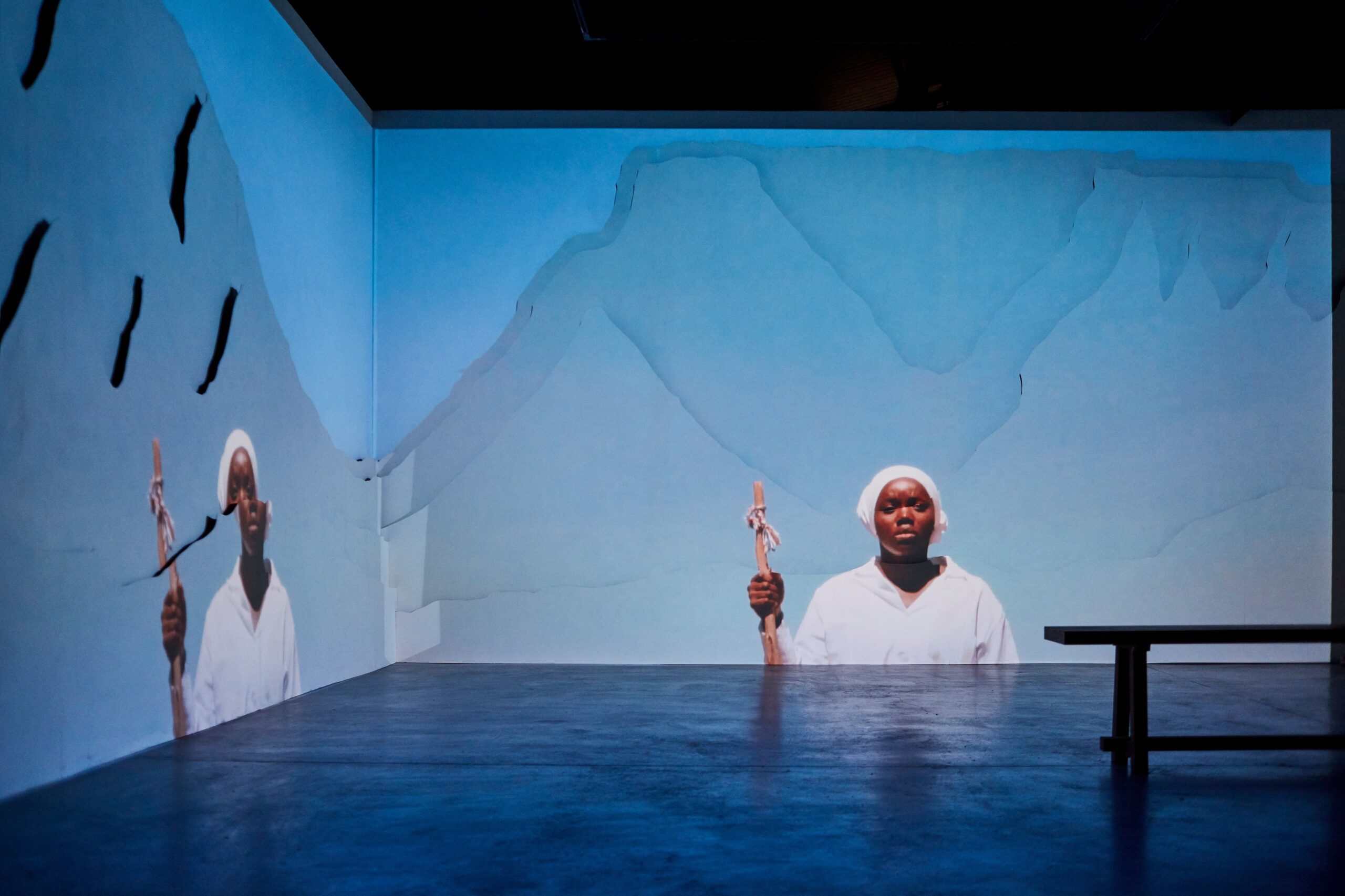
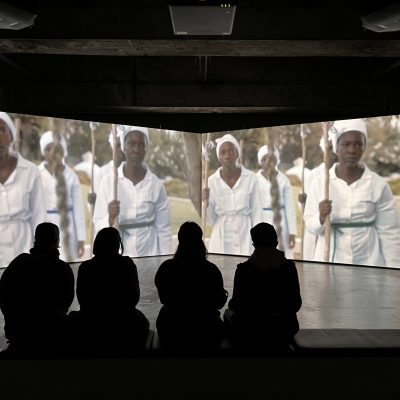
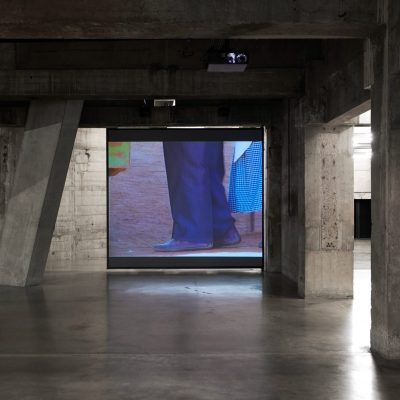
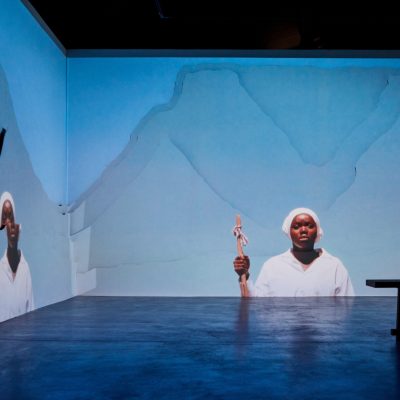
Back when Tate Modern was a power station, its subterranean area was used to store oil. No longer generating energy, the space is an incubator dedicated to supporting artists with an appetite for generating new ways to present live art, performance, installation, and film. Referred to as The Tanks, the space was recently home to a group of displays collectively titled A Clearing in The Forest. A group show, it features South African artists Dineo Seshee Bopape, Moshekwa Langa, and Buhlebezwe Siwani. In a bid to spot cohesion between the three artist’s work, this week’s Re:View contemplates new media exhibition making while questioning the impact artists have on external perspectives of the country.
Moshekwa Langa grew up in Bakenberg, Limpopo during a time where the Group Areas Act was still at play. Unlisted on official national maps, his hometown was almost a figment of his community’s collective imagination.
Titled Where Do I Begin, his presentation depicts a single file queue of people waiting and then boarding an unseen bus. Intermittently shuffling out of the shot, all we see are the subjects’s feet and a part of their calves as they interact with the orange dirt path beneath them.
Although there is movement, something about it playing on a loop seasons it with the incessancy of displacement, movement and unbelonging. It’s intimately knowing the defeat that comes when you’re sent to the back, after enduring it all the way to the front of a line.
A multidisciplinary artist and isangoma, Buhlebezwe Siwani’s practice is informed by transformation, restoration and healing. A part of her ongoing research and intervention, Siwani presented a work titled Amahubo at Tate.
Depending on the context, Amahubo can refer to ceremonial lamentations or ancient hymns charged with information about the past, present and future. Co-existing with Cinthia Marcelle’s work, Siwani’s Amahubo sees eight women, dressed in white, performing a uniform choreography. Rotating, there is a time in the performance where they repeatedly return to their respective starting points. A comment on navigating the ethereal, while based in the physical, Amahubo examines the ways our bodies negotiate circularity, time, land and labour to actualise ritual.
Many things, including a bridge between Langa and Siwani’s works, Bopape’s is i am sky explores her relationship with physical land and the intangible cosmos.
A low angle of Bopape’s face and the blue expanse that surrounds her, we gradually watch as the two characters blend into an ambiguity. Eventually transforming her profile into a portal.
Acknowledging unbelonging and yearning the work’s subject chooses to transcend the reality tied to these senses of deficiency.
More than a queue, ceremony and moving portrait the three presentations’ succinctly illustrate or give off a sense of indefinite (repeated) waiting being normal, to being home in restlessness and naturalising anticipation. It’s being estranged from resolve and forgetting what closure looks like yet still seeking them. A perpetual state of grief, the South African contributions for A Clearing in The Forest are mirrors that hurt as much as they comfort. A blend of questions and assertions, beyond the South African reading, the group show platforms new media as a medium valid enough to exist on its own.
Although independent from each other, Langa, Siwani and Bopape’s works bring related themes to the table. There’s the shared search for restoration and redemption, of leading with the body and valuing the land as a tool with either compass or thermometer qualities. Whole and without needing notes, the only curiosity that A Clearing in The Forest brings up is how international (or external) audiences engage with such examinations.
Subscribe
Subscribe
For exclusive news, tickets and invites delivered every week
